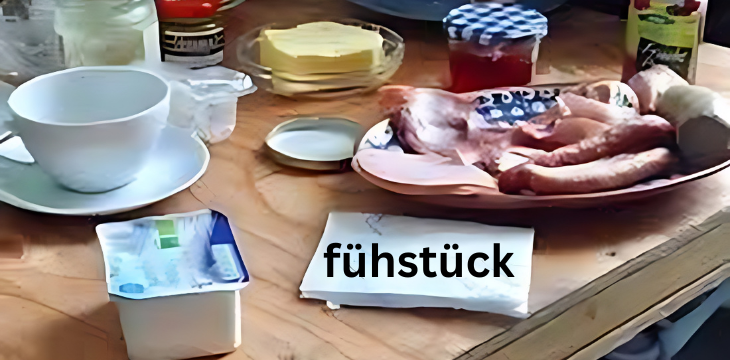Fühstück, the German word for breakfast, is an integral part of the daily routine in Germany. This meal, often hearty and varied, sets the tone for the day, combining a mix of savory and sweet items that cater to diverse tastes.
Table Of Contents
- 1 Importance of Breakfast in German Culture fühstück
- 2 Types and Categories of fühstück
- 3 Common and Uncommon Symptoms Associated with fühstück (Humor Section)
- 4 Causes and Risk Factors of fühstück
- 5 Diagnosis and Tests (Humor Section)
- 6 Treatment Options
- 7 Preventive Measures fühstück
- 8 Personal Stories or Case Studies
- 9 Expert Insights fühstück
- 10 Conclusion
Importance of Breakfast in German Culture fühstück
In Germany, breakfast is more than just a meal; it’s a tradition that brings families together. It’s a time to enjoy a leisurely start to the day, often accompanied by fresh bread, cold cuts, cheeses, and an array of spreads.
Overview of the Article fühstück
This article delves into the world of Frühstück, exploring its components, cultural significance, and how it compares to breakfast traditions in other countries. We’ll provide tips on how to recreate a German breakfast at home and highlight some of the best places to experience this meal in Germany.
Types and Categories of fühstück
Traditional German Breakfast
A traditional German breakfast typically includes a variety of bread rolls (Brötchen), cold cuts, cheeses, boiled eggs, butter, and spreads such as honey and jam. Coffee or tea is usually served alongside.
Regional Variations
Different regions in Germany have their own unique breakfast items. For example, in Bavaria, Weißwurst (white sausage) and pretzels are popular, while in northern Germany, smoked fish is a common breakfast staple.
Modern and Health-Conscious Options
In recent years, healthier breakfast options have gained popularity, including whole-grain breads, muesli, yogurt, and fresh fruit.
Common and Uncommon Symptoms Associated with fühstück (Humor Section)
“Symptoms” of a Good German Breakfast
- Satiety: Feeling comfortably full and satisfied.
- Energy Boost: A noticeable increase in energy levels.
- Happiness: An improved mood after enjoying delicious food.
“Uncommon Symptoms”
- Overindulgence: The risk of eating too much, given the delicious variety.
- Decision Fatigue: Struggling to choose between so many tasty options.
Causes and Risk Factors of fühstück
The Appeal of Variety
The extensive variety in a traditional German breakfast can lead to overindulgence, as it’s hard to resist sampling everything on offer.
Lifestyle Factors
A slower-paced, more leisurely breakfast can lead to better digestion and a more relaxed start to the day, contributing to overall well-being.
Diagnosis and Tests (Humor Section)
“Tests” for a Genuine German Breakfast Experience
- Taste Test: Ensuring that the bread is fresh and the coffee is strong.
- Visual Test: A well-laid table with a variety of foods.
- Sociability Test: Enjoying the meal with family or friends, as Frühstück is often a communal activity.
Treatment Options
Recreating a German Breakfast at Home
To create an authentic German breakfast at home, stock up on fresh bread rolls, a variety of cold cuts, cheeses, and spreads. Don’t forget the coffee or tea!
Breakfast Delivery Services
For those who prefer convenience, many bakeries in Germany offer breakfast delivery services, bringing fresh Brötchen and other items directly to your door.
Preventive Measures fühstück
Tips for a Balanced fühstück
- Portion Control: Enjoy a little bit of everything without overindulging.
- Incorporate Fresh Produce: Add fruits and vegetables for a healthier balance.
- Stay Hydrated: Drink water alongside your breakfast to stay hydrated.
Avoiding Common Pitfalls
- Overeating: Be mindful of portion sizes to avoid starting the day feeling sluggish.
- Skipping Breakfast: Make time for this important meal to maintain energy levels throughout the day.
Personal Stories or Case Studies
A Day in the Life of a German Family
Meet the Müllers, a typical German family. Every morning, they gather around the breakfast table, enjoying freshly baked Brötchen, assorted cheeses, and homemade jams. This daily ritual not only nourishes their bodies but also strengthens their family bonds.
An Expat’s Experience
John, an American living in Berlin, shares his experience of adapting to the German breakfast tradition. Initially overwhelmed by the variety, he now looks forward to this daily culinary adventure and has even started baking his own bread.
Expert Insights fühstück
Nutritionist’s View on fühstück
Dr. Anna Weber, a nutritionist, highlights the benefits of a traditional German breakfast. “The combination of protein, healthy fats, and carbohydrates provides sustained energy and helps prevent mid-morning hunger pangs,” she explains.
Chef’s Tips for an Authentic Experience
Chef Markus Schmidt suggests starting with high-quality ingredients. “The freshness of the bread and the quality of the cold cuts and cheeses make all the difference,” he says.
Conclusion
Summary of Key Points
fühstück is a cherished German tradition that offers a variety of delicious and nutritious foods. From traditional items like Brötchen and cold cuts to modern, health-conscious options, there’s something for everyone.
Call to Action
Whether you’re in Germany or elsewhere, consider incorporating elements of a German breakfast into your routine. It’s a delightful way to start the day with good food and good company.


